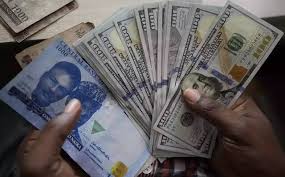1. Introduction: The Power of Symbols in Human History
Symbols have been an intrinsic part of human societies for millennia, serving as visual representations that convey complex ideas, values, and social structures. They function as shorthand for authority, status, and even protection against malevolent forces. In societal contexts, symbols are not merely decorative; they shape identities, reinforce hierarchies, and transmit cultural narratives across generations.
Throughout history, symbols have been used to demonstrate power—whether by rulers displaying their dominance or by artisans showcasing wealth. Conversely, certain symbols also embody curses or supernatural fears, used to ward off evil or to curse enemies. This duality highlights the profound psychological and social influence symbols wield in human life.
Understanding how symbols function provides insight into cultural identities and societal hierarchies, revealing the underlying mechanisms through which power and fear are communicated visually and psychologically.
- Symbols as Markers of Power and Authority
- Symbols of Wealth and Prosperity
- The Dual Nature of Symbols: Curses and Fear Inducement
- Mythology and the Power of Symbols: The Case of Medusa
- Cultural Variations in Symbolic Meaning
- Modern Reflections: Symbols in Contemporary Society
- The Non-Obvious Depths: Semiotics and Subconscious Symbolism
- Conclusion: The Enduring Power of Symbols in Human Society
2. Symbols as Markers of Power and Authority
Throughout history, rulers and leaders have employed specific symbols to demonstrate their authority and consolidate power. For example, crowns and scepters have long been associated with monarchy and divine right. The crown, often decorated with precious stones, symbolizes sovereignty and legitimacy, while scepters represent command and control.
Colors and motifs also play a crucial role in signaling authority. The use of purple dye in ancient royalty, derived from rare mollusks, was limited to emperors and kings due to its expense, thus becoming a symbol of imperial status. Similarly, seals bearing intricate motifs or emblems signified official power and authenticity, as seen in Chinese imperial seals or European royal insignia.
Military insignia and uniforms further exemplify symbols of strength. The stars and stripes on modern military uniforms or the regalia of ancient Roman legions communicated hierarchy, discipline, and dominance. These symbols serve to reinforce the authority of the military and, by extension, the state.
Practical example:
A study of heraldic symbols reveals how coats of arms functioned as personal emblems of noble families, conveying their lineage, alliances, and social standing. These symbols became visual shorthand for power and reputation in medieval Europe, much like modern branding consolidates corporate identity.
3. Symbols of Wealth and Prosperity
Material symbols such as gold, gemstones, and luxurious artifacts have long been indicators of wealth. Gold’s intrinsic value and its malleability made it the preferred medium for currency and adornment across civilizations. For instance, the ancient Egyptians crafted jewelry and artifacts from gold, emphasizing divine wealth and eternal life.
Architectural symbols like palaces and monuments also serve as physical manifestations of wealth. The grandeur of Versailles or the Taj Mahal communicates not only material riches but also political power and cultural prestige. These structures often incorporate symbols—such as domes, columns, or decorative motifs—that convey stability, divine favor, or imperial authority.
The evolution of currency symbols reflects economic influence. Coins bearing images of leaders or national symbols, and banknotes with intricate designs, serve as tangible markers of a nation’s prosperity. These symbols reinforce trust and authority in the monetary system, influencing economic stability and influence.
Practical example:
The use of gold coins in trade not only facilitated economic transactions but also acted as symbols of a nation’s wealth and stability. Modern currencies continue this tradition, with symbols like the dollar sign or the euro representing economic influence on a global scale.
4. The Dual Nature of Symbols: Curses and Fear Inducement
Symbols have historically been used to ward off evil or to curse enemies. Amulets inscribed with protective symbols, such as the Eye of Horus in Egyptian culture, were believed to provide safety and ward off malevolent spirits.
Conversely, symbols can embody curses, instilling fear and submission. The gaze of Medusa, for example, is a powerful symbol of petrification and divine punishment. In mythology, her image functions as a curse that transforms the cursed into stone, symbolizing the destructive power of divine wrath or societal fears of chaos.
Modern superstitions often incorporate symbols to invoke protection or fear. The number 13, a symbol of bad luck in Western cultures, influences behavior, leading to the omission of the 13th floor in buildings or avoiding certain rituals. This demonstrates how symbols continue to influence subconscious behavior and societal norms.
Practical example:
The use of protective symbols like the Hamsa hand or evil eye amulets exemplifies how cultures embed curses and protections within visual symbols, shaping social practices and individual behaviors.
5. Mythology and the Power of Symbols: The Case of Medusa
The legend of Medusa, one of Greek mythology’s most iconic figures, encapsulates the complex relationship between power, curses, and transformation. Medusa’s visage, with its snake hair and petrifying gaze, symbolizes the destructive potential of divine punishment and societal fears about beauty and monstrosity.
Medusa’s image reflects societal attitudes—her transformation into a monster can be seen as a punishment for vanity or hubris, embodying fears about the consequences of defying divine or societal norms. Her cursed appearance continues to evoke powerful imagery in art, literature, and popular culture, illustrating how mythological symbols endure as representations of societal fears and moral lessons.
The story of Medusa’s blood creating Pegasus, the winged horse, adds another layer of symbolism. As a divine artifact born from a curse, Pegasus embodies divine power and the unpredictable outcomes of divine wrath, illustrating how curses can paradoxically lead to sources of great strength and inspiration. For more insights into modern interpretations and symbolic depth, explore legendof medussa.
Societal reflection:
“Mythology often mirrors societal fears and moral codes, transforming abstract fears into tangible symbols that influence generations.”
6. Cultural Variations in Symbolic Meaning
Different civilizations have developed unique symbols to represent power and wealth. The Egyptian Ankh, symbolizing eternal life, exemplifies spiritual authority intertwined with material prosperity. In Chinese culture, the dragon is a symbol of imperial power, strength, and good fortune, often depicted in art and architecture to reinforce societal hierarchy.
Perceptions of curses and protective symbols also vary. While Western cultures associate the number 13 with bad luck, many East Asian societies see symbols like the bat as auspicious, symbolizing happiness and prosperity. This diversity underscores how cultural context influences the meaning and power attributed to symbols.
7. Modern Reflections: Symbols in Contemporary Society
In today’s world, corporate logos serve as powerful symbols of wealth and influence. Brands like Apple or Nike leverage minimalist symbols to communicate innovation, quality, and dominance in their markets. These visual identities shape consumer perceptions and establish corporate authority.
Entertainment media continues to draw upon mythological and historical symbols. Legends like Medusa are reimagined in movies, fashion, and art, shaping societal perceptions of beauty, fear, and power. For instance, the legendof medussa exemplifies how ancient symbols are repurposed to resonate with modern audiences.
Superstitions persist, with symbols like the horseshoe or rabbit’s foot believed to ward off bad luck, illustrating how symbols continue to influence behavior and decision-making in contemporary life.
8. The Non-Obvious Depths: Semiotics and Subconscious Symbolism
Semiotics—the study of signs and symbols—reveals how symbols operate on a subconscious level to influence societal norms and individual behaviors. For example, the color red often signifies danger or urgency, prompting instinctive reactions without conscious awareness.
Over time, symbols evolve or are reinterpreted, reflecting changing cultural values. The swastika, once a symbol of good luck in many cultures, was co-opted as a symbol of hate, demonstrating how the meaning of symbols can shift dramatically.
Recognizing these layers of meaning is crucial for deciphering cultural and historical narratives, as symbols encode complex societal messages often beneath conscious awareness.
9. Conclusion: The Enduring Power of Symbols in Human Society
Symbols remain a vital aspect of human culture, reflecting and reinforcing ideas of power, wealth, and even divine curses. Their ability to communicate complex messages across generations underscores their enduring relevance.
A critical understanding of symbols enables us to interpret history more accurately, recognizing how visual cues shape societal values and individual perceptions. As exemplified by legends like legendof medussa, the stories and symbols we inherit continue to influence modern culture, illustrating timeless principles of human psychology and societal structure.
In essence, symbols are not static; they evolve, acquire new meanings, and adapt to changing contexts. Their power to influence society—whether to affirm authority, signify wealth, or invoke fear—remains as potent today as it was in ancient civilizations.






